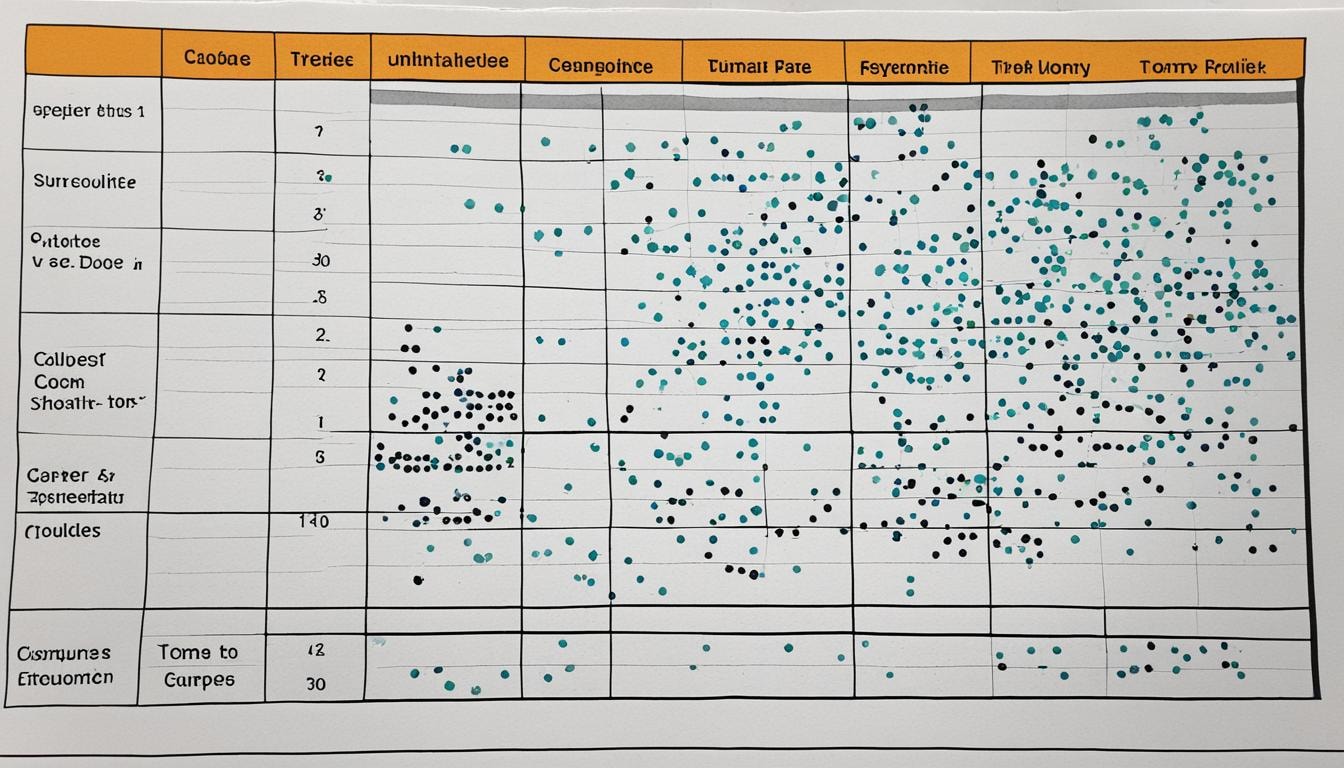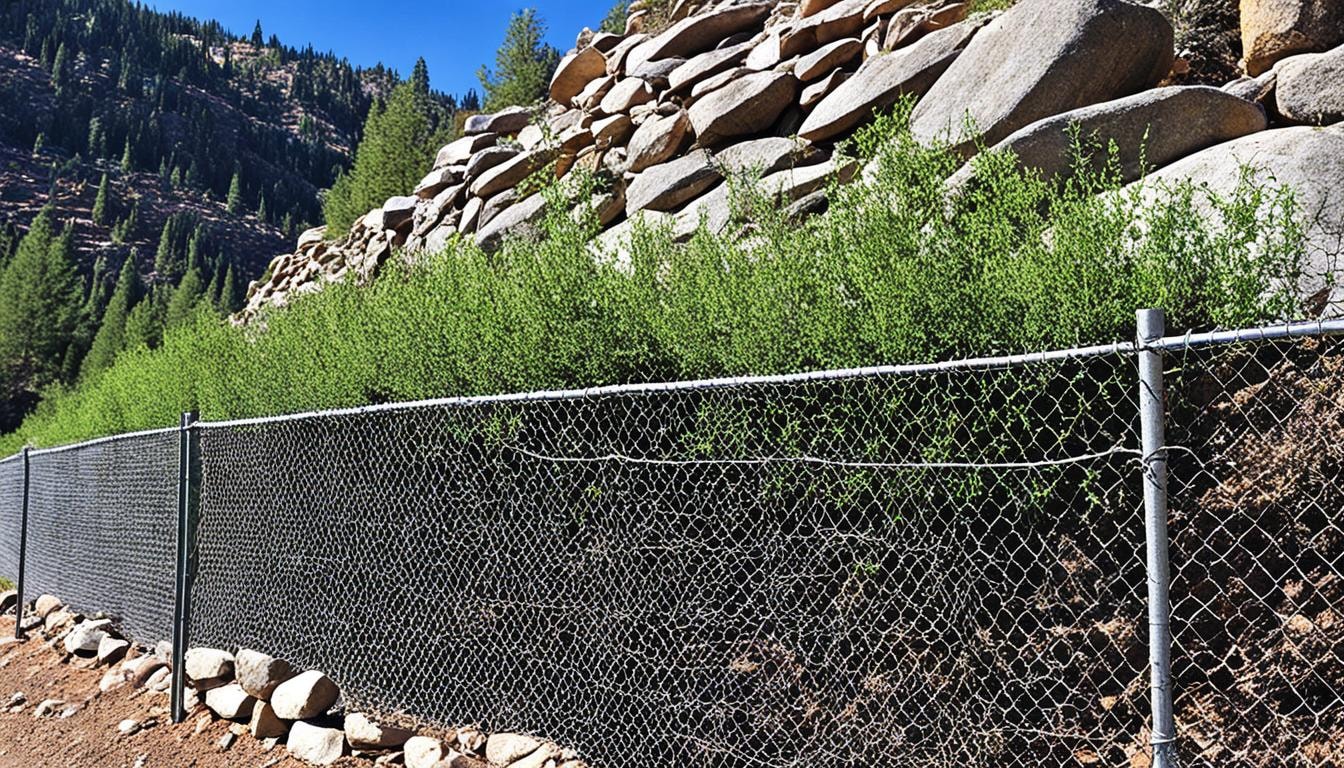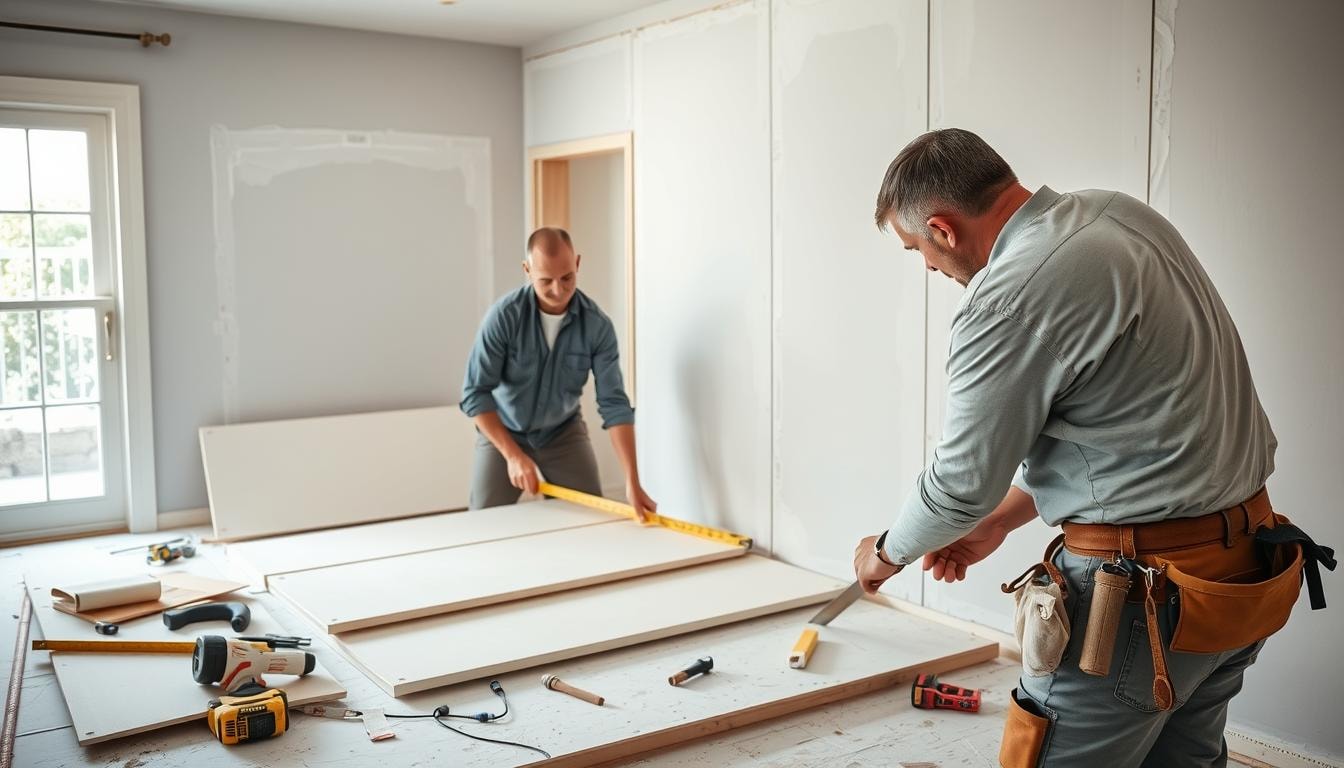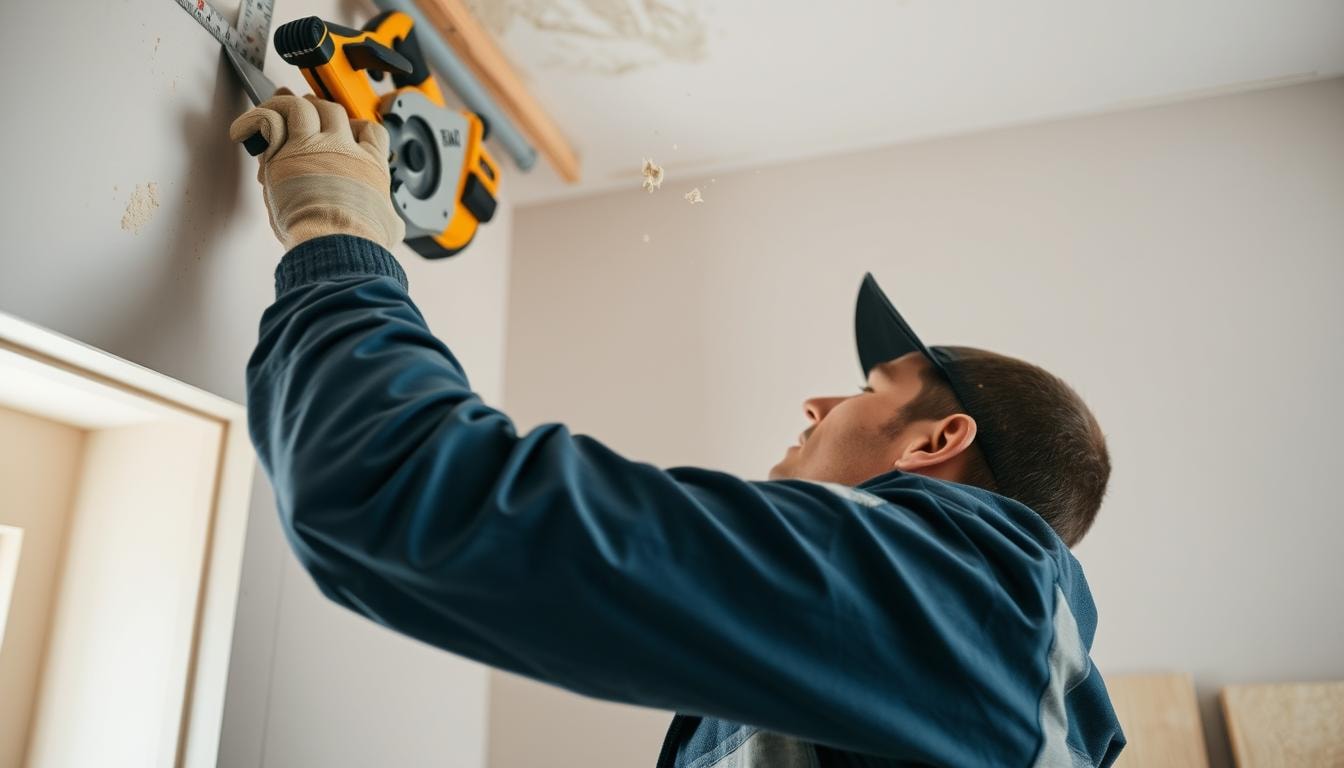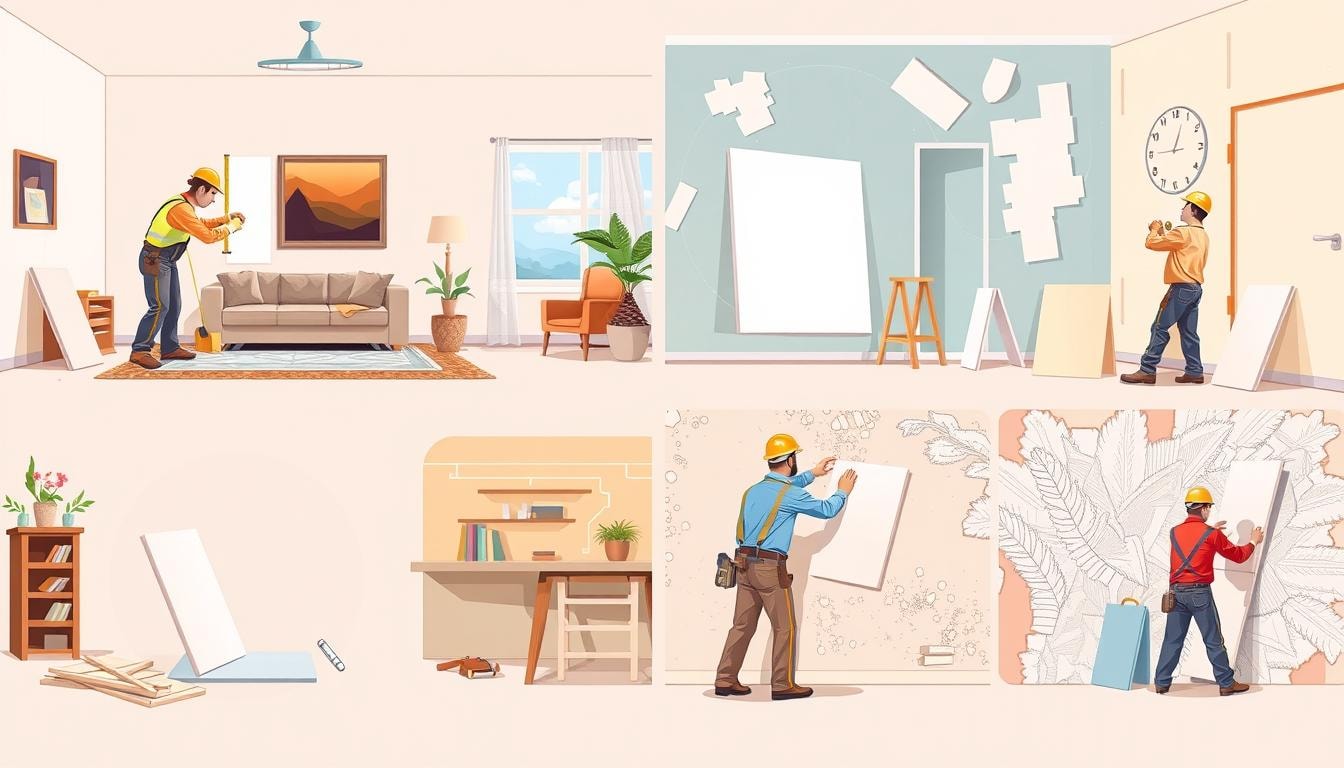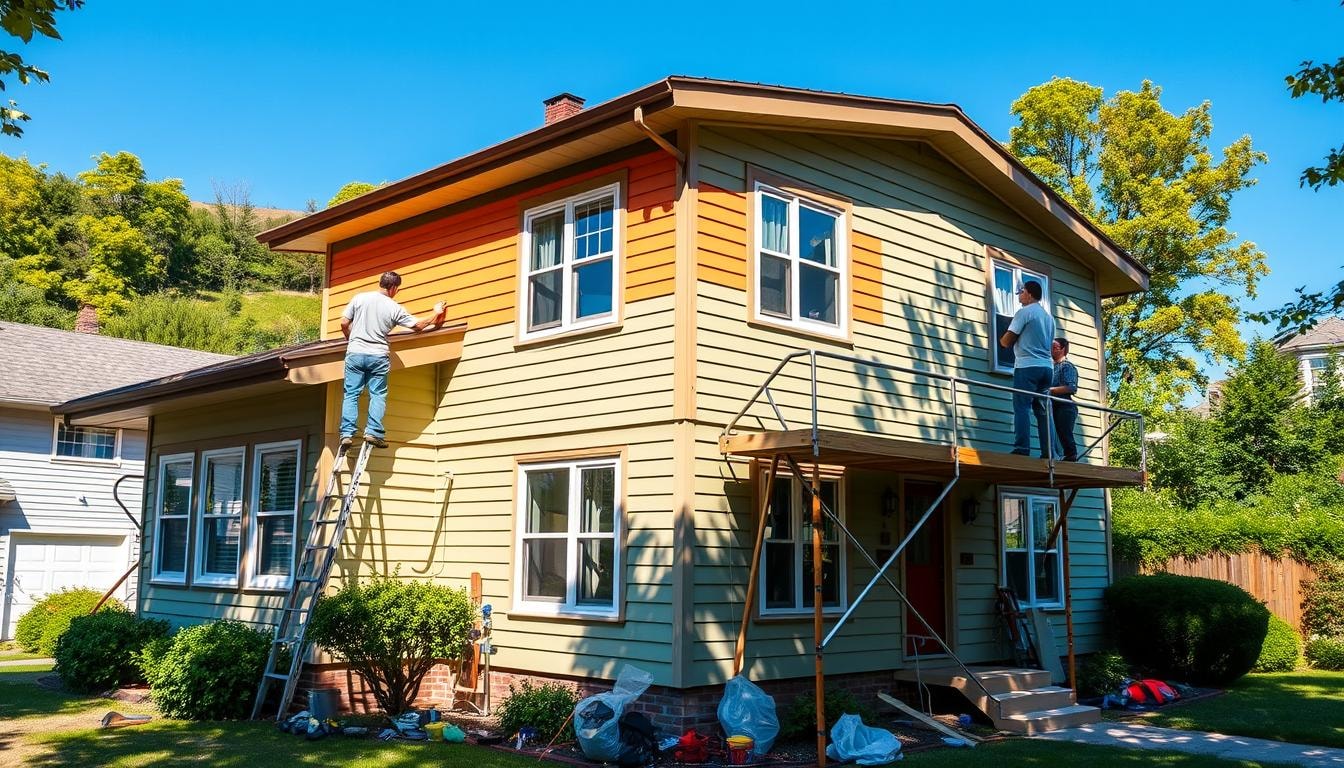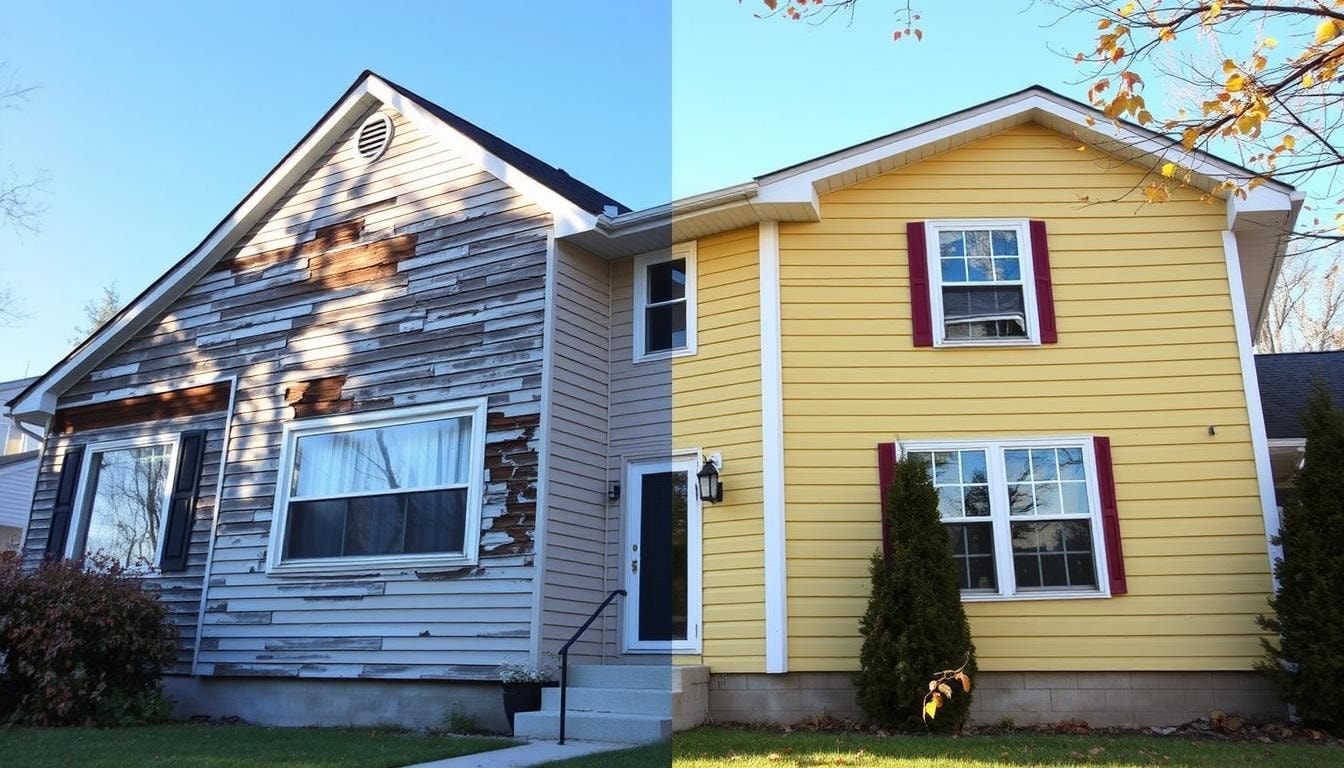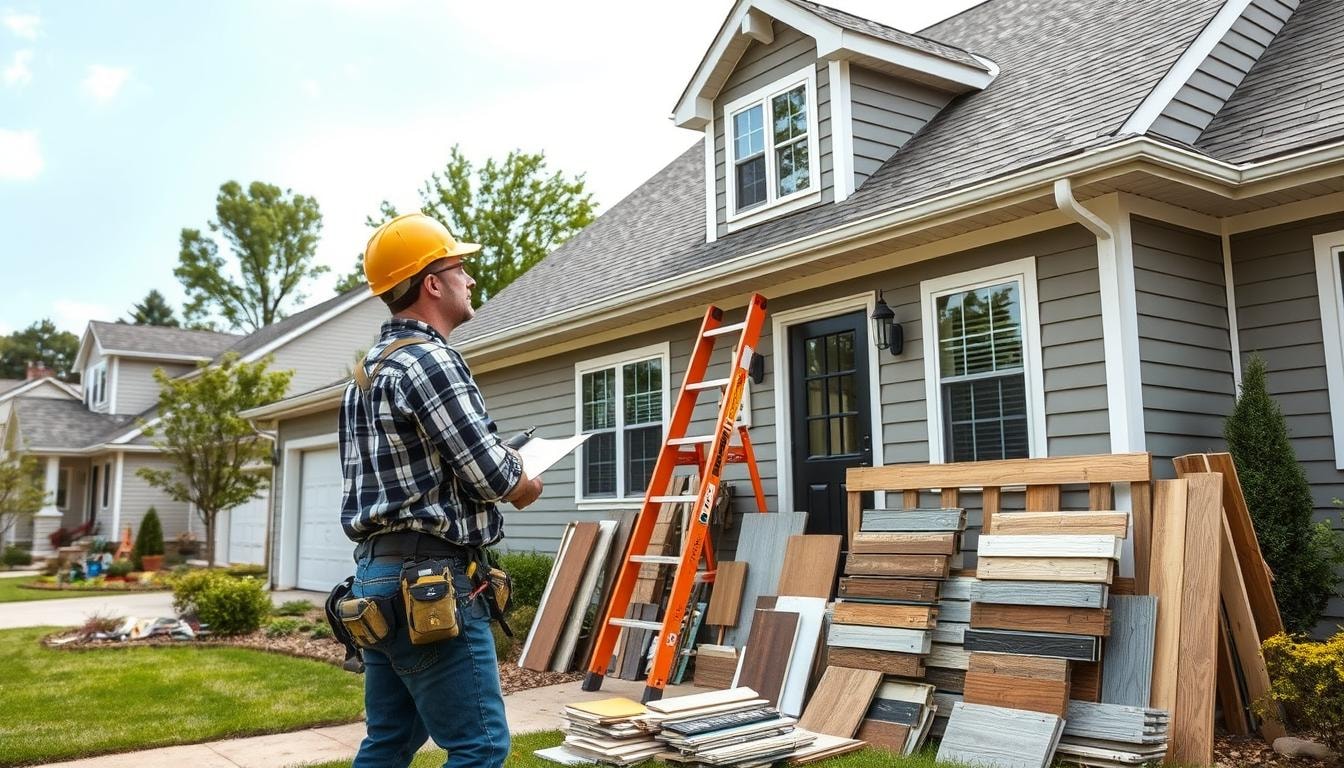Blown-in Insulation Near You
Can’t find what you are looking for?
How It Works
-
Answer a few questions about your home project.
-
Within seconds, get matched with top-rated local pros.
-
Compare quotes and choose the best pro for the job.
Blown-in Insulation In Your Area
Understanding Blown-In Insulation: Types, Benefits, and Installation Process
Meta Description: Discover the benefits of blown-in insulation for your home. Learn about types, installation, and energy savings. Improve comfort and efficiency with this effective solution.
Is your home too hot or too cold? Maybe you need better insulation. Blown-in insulation is a great choice for making your home cozy and saving energy. But what is it, and how does it stack up against other insulation options? Let’s find out about blown-in insulation.
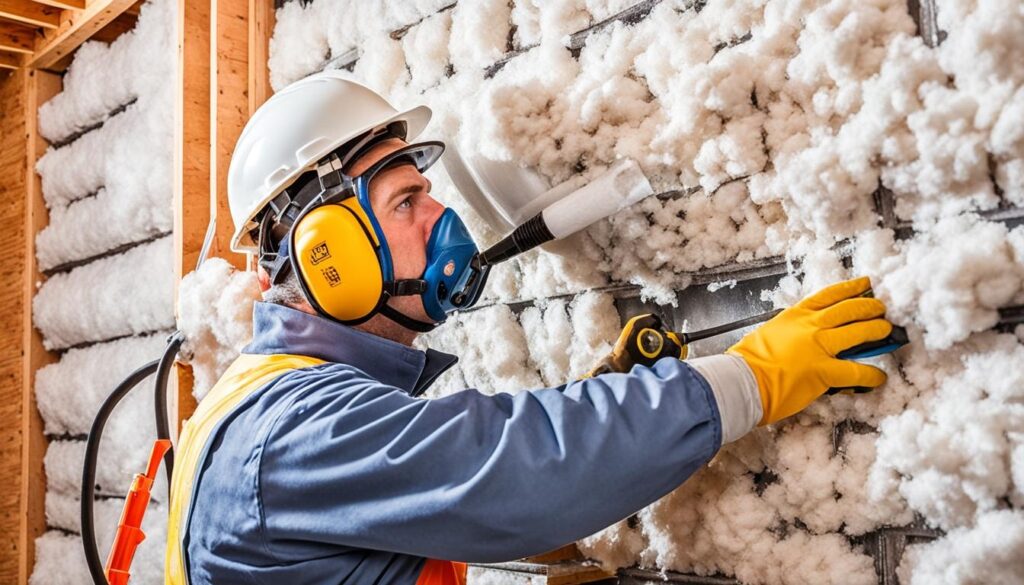
Key Takeaways
- Blown-in insulation fills gaps for better energy use.
- Cellulose, fiberglass, and mineral wool are top choices for blown-in insulation.
- It cuts heating and cooling costs, improves soundproofing, and boosts comfort.
- Installing it is easy and quick, great for new homes or old ones.
- Getting ready and staying safe are key for a successful insulation job.
What is Blown-In Insulation?
Blown-in insulation is a type of insulation that gets blown into walls and attics. It’s made from materials like cellulose, fiberglass, or mineral wool. This method fills gaps and boosts a home’s energy efficiency and comfort.
Definition and Basic Overview
It’s a flexible solution for both new and old homes. Insulation material is blown in with a special machine. This creates a solid, airtight layer. It’s often compared to other insulators like fiberglass batts and spray foam.
Comparison to Other Insulation Types
- Cellulose insulation, like Nu-Wool, is great for fighting fires and keeping pests away.
- Mineral wool comes from recycled materials but can be harmful if breathed in.
- Fiberglass is made from glass and needs careful handling to avoid breathing in tiny pieces.
- Cellulose, or Nu-Wool, uses recycled newspapers and is safe to breathe in.
- It has an R-value of 3.2 to 3.8 per inch, close to fiberglass batts’ 3.7.
Blown-in insulation fills gaps well, making it a top choice for insulation. Knowing the types and their benefits helps homeowners pick the best for their homes.
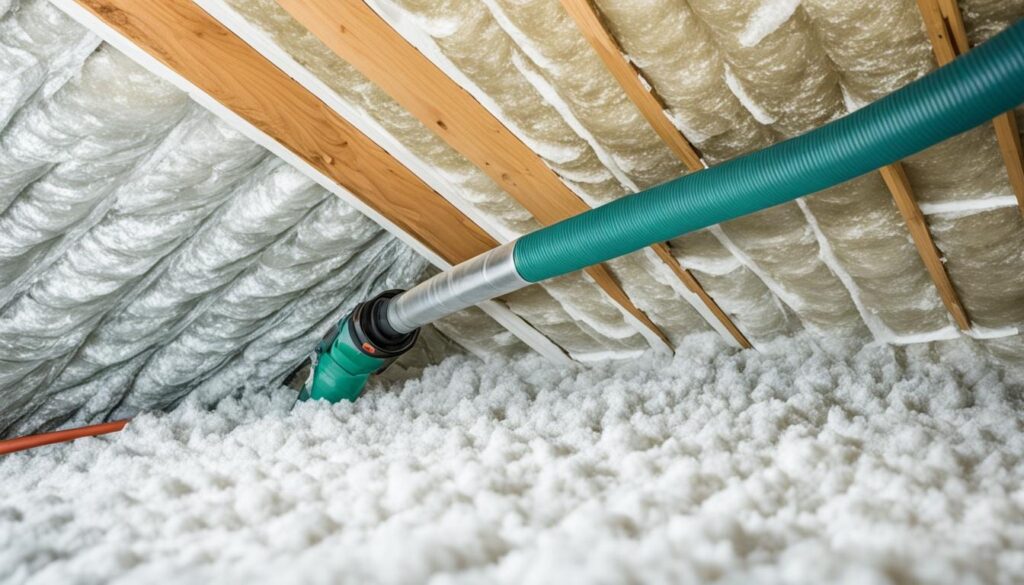
Types of Blown-In Insulation
Homeowners have many options for blown-in insulation. Each type has its own benefits. These include cellulose insulation, fiberglass insulation, and mineral wool insulation.
- Cellulose Insulation: Cellulose insulation is eco-friendly. It’s made from recycled paper with fire-retardant chemicals. This insulation is great for keeping your home warm and saving energy.
- Fiberglass Insulation: Fiberglass insulation is another popular choice. It’s made from fine glass fibers. This insulation is good at keeping sound out and heat in. It can cut energy bills by up to 35% compared to batt insulation.
- Mineral Wool Insulation: Mineral wool insulation comes from natural rock or slag. It’s great for fire resistance and keeping your home warm. This insulation is a good choice for many homeowners.
Choosing blown-in insulation depends on cost, R-value, and your project’s needs. No matter the type, it helps seal air leaks and boosts your home’s energy efficiency and comfort.
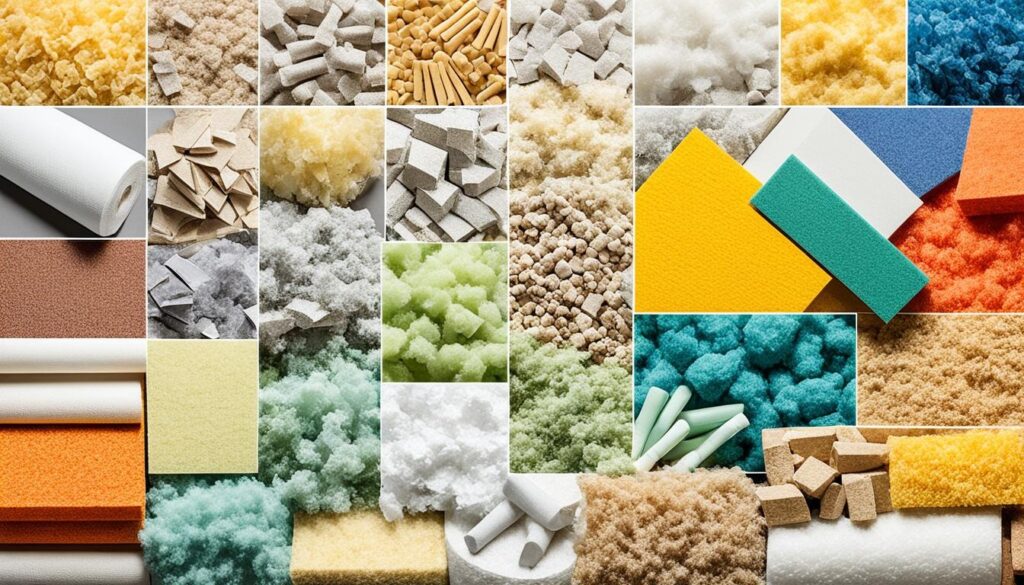
Benefits of Blown-In Insulation
Blown-in insulation has many advantages for homeowners. It makes homes more comfortable and efficient. It stops heat from escaping and air from leaking, which lowers heating and cooling costs.
With blown-in insulation, homes can save up to 15% on energy bills. This is because it improves the R-values of the home. This means the home stays warmer in winter and cooler in summer.
- Seamless Coverage and Air Sealing: Blown-in insulation covers areas perfectly, sealing air leaks and drafts. This keeps the inside of the home comfortable. It stops hot or cold air from getting in, easing the load on heating and cooling systems.
- Sound Insulation: Blown-in insulation also reduces noise. Materials like cellulose and mineral wool absorb outside sounds. This makes homes quieter and more peaceful.
These benefits make blown-in insulation a smart choice for homes. It saves money on energy bills and makes living more comfortable. Homeowners get to enjoy a quieter, more pleasant home.
Preparing for Installation
Before you start installing blown-in insulation, make sure the area is ready. Seal any cracks or holes in walls, ceilings, or the attic. This stops air leaks and helps the insulation work better. Clear the attic of items or debris to make room for the insulation.
Sealing Cracks and Holes
Sealing air leaks is key before you begin. Check your attic for cracks, gaps, or openings near pipes, wires, and lights. Use caulk or weatherstripping to close these spots. This keeps warm air in and cold air out.
Sealing the attic floor/ceiling is very important. It helps stop air leaks.
Clearing the Attic Space
It’s important to remove items, debris, or obstructions from the attic. This lets the insulation spread out evenly. Building a catwalk helps you work without disturbing the insulation.
Sealing gaps and clearing the attic makes the insulation work better. Your home will be more energy-efficient and cozy.
The Installation Process
The process to install blown-in insulation has several steps. First, seal any cracks or holes and clear the attic. Then, load the insulation into a blower machine. This machine spreads the insulation evenly, making sure it covers well and works great.
Step-by-Step Guide
- Seal any cracks, gaps, or holes in the attic to prevent air leaks.
- Clear the attic space, removing any obstructions or existing insulation.
- Load the insulation material into the blower machine.
- Use the hose attachment to distribute the insulation evenly across the attic floor.
- Ensure the insulation reaches the desired depth and covers all areas, including the eaves and edges.
- Check for any areas that may need additional insulation and add it as needed.
Professional vs. DIY Installation
Installing blown-in insulation can be done by pros or by you. Pros have the right tools and know-how to get it right. But, some folks like to do it themselves, using guides from the makers or online. Either way, getting it right is key for saving energy and money.
Blown-In Insulation for Existing Homes
Homeowners often pick blown-in insulation to make their homes more energy efficient and cozy. This insulation is easy to put in places that are hard to reach, like wall cavities and attics. You can hire experts or do it yourself, based on what you’re comfortable with and your home’s needs.
Using blown-in insulation, like cellulose or fiberglass, can make your home warmer and cut down on energy bills. The US Department of Energy says 56% of a home’s energy goes to heating and cooling. So, insulation is key to saving energy.
Here are some good things about blown-in insulation for older homes:
- Seamless coverage and air sealing for better energy use
- Better sound insulation for a quieter home
- Customizable R-values to fit local energy rules
- Potential savings on heating and cooling costs
Choosing blown-in cellulose or fiberglass insulation can make your home more comfortable and efficient. It’s a smart way to upgrade your home.
Blown-In Insulation for New Construction
Blown-in insulation is a top pick for new buildings. It fits well into the building process, covering all areas perfectly. It fills gaps that other insulation types might miss.
Builders and contractors suggest it for making new homes more energy-efficient. It helps lower heating and cooling bills by sealing walls well. The main materials used are cellulose, fiberglass, and mineral wool.
Insulation needs vary by region. In Southern areas, it’s usually R-30 to R-60. In Northern areas, it’s R-49 to R-60. Walls have spaces between 16 to 24 inches apart. The insulation should spread out well to avoid cold spots.
When installing, wear a dust mask, goggles, long sleeves, pants, and earplugs for safety. After, seal any holes with patching compound, smooth it, and paint over it. Check the insulation later for gaps or settling.
- Blown-in insulation fits well into new building projects
- It covers all areas and fills gaps well
- Builders often suggest it for saving energy
- Materials used are cellulose, fiberglass, and mineral wool
- Regional R-value needs and spreading it right are key
- Be safe during installation and check after for gaps
Maintaining Blown-In Insulation
Keeping your blown-in insulation in good shape is key for its long-term performance. Over time, the insulation might settle or get compressed. This can lower its R-value and how well it insulates. Homeowners should check the insulation often and add more if needed to keep it at the right depth and coverage.
It’s also vital to fix any problems that could harm the insulation. This means dealing with moisture issues or pests that might damage it. By acting quickly, you can keep your blown-in insulation working well for many years.
Energy Star says a well-insulated attic can save 10 to 15 percent on heating and cooling costs. Blown-in insulation is great for saving energy because it has a high R-value. It also seals air leaks and gaps better than other insulation types.
With the right care, your blown-in insulation will keep giving you these benefits:
- Improved energy efficiency and cost savings
- Seamless coverage and effective air sealing
- Enhanced sound insulation
By following the best ways to care for your blown-in insulation, your home will stay cozy and save energy for years.
Costs and Return on Investment
Investing in blown-in insulation is smart for homeowners. It boosts energy efficiency and cuts heating and cooling costs. The cost varies, but the savings over time make it a good choice.
The price for blown-in insulation is between $0.60 and $1.20 per square foot for cellulose. For fiberglass, it’s $0.50 to $1.00 per square foot. With professional installation, a typical home costs $1,500 to $5,000.
But the savings are big. Proper insulation can cut energy bills by up to 20%. That means saving $200 to $500 a year. Often, the cost of insulation pays off in three to five years.
Also, homes with good insulation sell for more. They’re more energy efficient. So, homeowners get quick and long-term perks. These include more comfort, lower bills, and a higher home value.
Safety Considerations
When installing blown-in insulation, safety comes first. It’s important for homeowners and contractors to wear protective gear. This includes dust masks, safety glasses, and gloves to avoid breathing in insulation fibers and particles. Handling insulation materials safely is key, especially with fiberglass and mineral wool, which can bother your skin and lungs if not handled right.
Protective Gear
- Dust masks to filter out fine particles
- Safety glasses to protect eyes from airborne debris
- Gloves to prevent skin irritation from the insulation materials
- Long-sleeved shirts and pants to cover exposed skin
Handling Insulation Materials
- Follow the manufacturer’s safety instructions for the specific insulation material, whether it’s cellulose, fiberglass, or mineral wool.
- Avoid making too much dust by cutting or shaping the insulation in areas with good airflow.
- Throw away used or extra insulation the right way to keep the environment clean.
If you’re doing a DIY blown-in insulation job, learn the safety steps from the manufacturer. This will help you install it safely and correctly.
Connect with Top Insulation Pros Through FindPros
Discovering the right insulation for your home can be daunting, but FindPros simplifies the process. By filling out a quick survey about your home project, you can connect with top-rated local professionals who specialize in blown-in insulation. Our platform ensures you receive competitive quotes as multiple pros vie for your job, helping you secure the best pricing.
Plus, you can find experts who align with your preferences, making the entire experience smoother. Within seconds, you’ll be matched with qualified contractors ready to enhance your home’s energy efficiency and comfort. Compare quotes and choose the best pro for your insulation needs.
Conclusion
Blown-in insulation is a great way to make homes more energy efficient and comfortable. It covers areas well, stops air leaks, and keeps heat and sound out. This means lower bills and a cozier home, whether it’s in an old or new house.
It’s easy to put in, safe for the environment, and lasts a long time. It fills gaps and fits into odd shapes, keeping the temperature steady. This saves a lot on energy costs. Plus, it makes your home quieter and more peaceful.
To get the most out of blown-in insulation, prepare well, install it right, and keep it up. This leads to a home that’s comfy, saves energy, and is good for the planet. As people aim for greener homes, blown-in insulation is a top choice for lasting benefits and better living.
Frequently Asked Questions (Blown-in Insulation)
MOST POPULAR CITIES
Browse by State- Alameda
- Costa Mesa
- Laguna Beach
- Orange
- Alhambra
- Culver City
- Lancaster
- Oroville
- Anaheim
- Daly City
- Livermore
- Oxnard
- Antioch
- Davis
- Lodi
- Pacific Grove
- Arcadia
- Downey
- Lompoc
- Palm Springs
- Bakersfield
- El Centro
- Long Beach
- Palmdale
- Barstow
- El Cerrito
- Los Angeles
- Palo Alto
- Belmont
- El Monte
- Malibu
- Pasadena
- Berkeley
- Escondido
- Martinez
- Petaluma
- Beverly Hills
- Eureka
- Marysville
- Pomona
- Brea
- Fairfield
- Menlo Park
- Port Hueneme
- Buena Park
- Fontana
- Merced
- Rancho Cucamonga
- Burbank
- Fremont
- Modesto
- Red Bluff
- Calexico
- Fresno
- Monterey
- Redding
- Calistoga
- Fullerton
- Mountain View
- Redlands
- Carlsbad
- Garden Grove
- Napa
- Redondo Beach
- Carmel
- Glendale
- Needles
- Redwood City
- Chico
- Hayward
- Newport Beach
- Richmond
- Chula Vista
- Hollywood
- Norwalk
- Riverside
- Claremont
- Huntington Beach
- Novato
- Roseville
- Compton
- Indio
- Oakland
- Sacramento
- Concord
- Inglewood
- Oceanside
- Salinas
- Corona
- Irvine
- Ojai
- San Bernardino
- Coronado
- La Habra
- Ontario
- San Clemente




